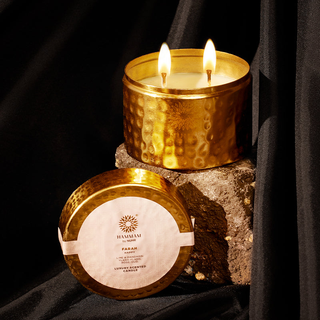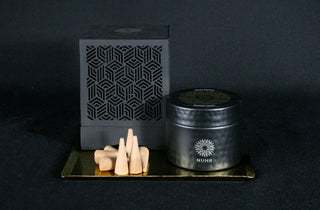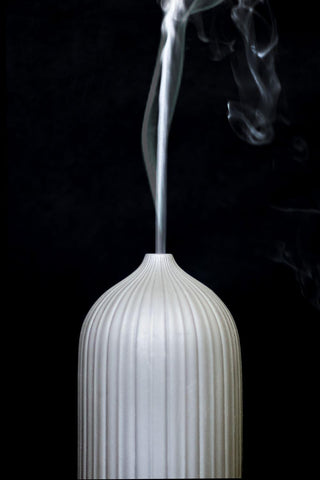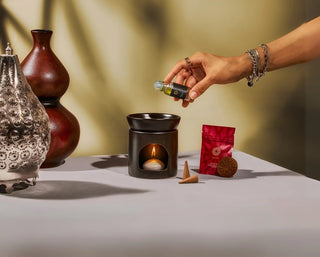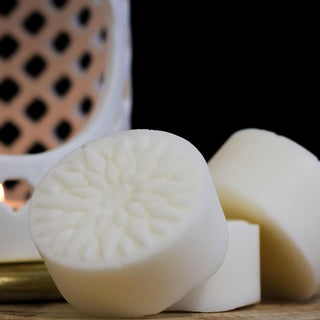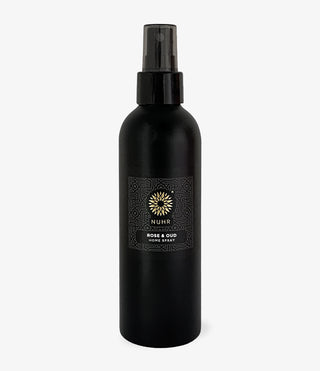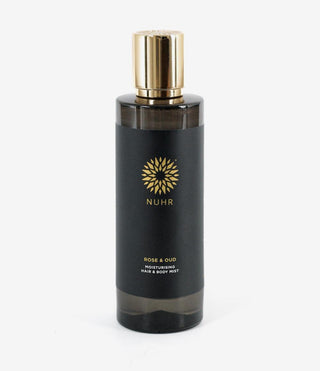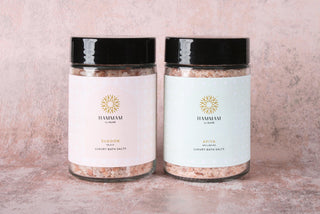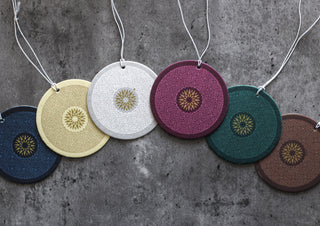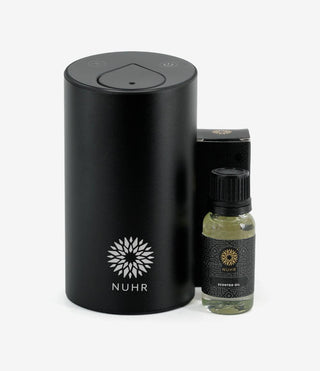Understanding the difference between oud and perfume helps you choose the right fragrance investment for your lifestyle. Oud is a natural, oil-based fragrance extracted from infected Aquilaria tree heartwood, offering 8-12 hours of deep, woody complexity.
Traditional perfume, meanwhile, combines alcohol with fragrance oils for immediate scent projection and diverse fragrance families. The key differences are how long they last, the application methods, and the scent experiences they create. If you’re looking for authentic luxury with superior staying power, Nuhr Home's oud perfume collection represents the finest balance of traditional craftsmanship and modern convenience.
Key Takeaways
-
Longevity: Oud lasts 8-12 hours naturally; traditional perfume provides just 2-6 hours of scent.
-
Application: Oud applies as concentrated oil to pulse points; perfume sprays for instant coverage.
-
Scent Profile: Oud delivers deep, evolving woody complexity; perfume offers diverse fragrance families.
-
Investment: Oud costs more upfront but offers better cost-per-wear; perfume provides affordable variety.
-
Skin Compatibility: Oil-based oud suits sensitive skin; alcohol-based perfume may cause irritation.
What Is Oud?
Oud, also known as agarwood, forms when Aquilaria trees become infected with the fungus Phialophora parasitica. This infection causes the tree to produce dark, resinous heartwood as a defence mechanism. The resulting aromatic wood becomes one of the world's most prized fragrance ingredients, with only 2 percent of Aquilaria trees naturally producing this precious resin.
Oud's Distinctive Characteristics
Carved oud and oud wood offer rich, complex scent profiles that evolve throughout the day. The fragrances typically feature:
-
Woody Foundation: Deep, earthy timber notes that anchor the scent
-
Musky Undertones: Warm, sensual qualities that develop with body heat
-
Sweet Nuances: Subtle honey and vanilla notes that soften intensity
-
Smoky Elements: Mysterious, incense-like qualities that add depth
Nuhr Home's luxury oud fragrances capture these authentic characteristics through expert craftsmanship. If you’re interested in home fragrance too, learning how to burn oud cones properly can enhance your oud experience significantly.
What Are Traditional Perfume Formulas?
Traditional perfumes use alcohol-based formulations that blend fragrance oils with ethanol. This alcohol base serves multiple purposes: it acts as a solvent to dissolve fragrance components, enables spray application, and helps project scent through rapid evaporation. Most commercial perfumes follow the classic pyramid structure with top, middle, and base notes that unfold over time.
How Traditional Perfume Works
The alcohol in perfumes evaporates quickly when applied, carrying fragrance molecules into the air and creating immediate scent projection. This three-stage development includes:
-
Top Notes: Light, volatile ingredients that create first impressions (citrus, herbs)
-
Heart Notes: The main fragrance character that defines the perfume (florals, spices)
-
Base Notes: Long-lasting foundation notes that provide depth (woods, musks)
Oud vs Perfume at a Glance
|
Factor |
Oud |
Traditional Perfume |
|
Source |
Natural Aquilaria tree resin |
Alcohol + fragrance oil blend |
|
Concentration |
20-40% pure fragrance oils |
5-20% fragrance in alcohol base |
|
Longevity |
8-12 hours, lingers on clothes |
2-6 hours, requires reapplication |
|
Application |
Dabbed on pulse points |
Sprayed for coverage |
|
Scent Development |
Evolving, personal experience |
Structured pyramid progression |
|
Skin Impact |
Moisturising, alcohol-free |
May cause dryness from alcohol |
|
Price Range |
Higher initial investment |
Wide range, lower entry cost |
|
Cost Per Wear |
Lower due to longevity |
Higher due to reapplication needs |
|
Variety |
Limited natural variations |
Unlimited synthetic combinations |
|
Cultural Heritage |
Ancient Middle Eastern tradition |
Modern Western perfumery |
|
Projection |
Intimate, close-to-skin scent |
Wide scent throw, immediate presence |
|
Versatility |
Signature scent approach |
Multiple options for occasions |
Oud vs Perfume: A Detailed Comparison
Oud and traditional perfume have different benefits. Familiarize yourself with these differences before choosing between the two.
Oud Advantages
-
Superior Longevity and Value: Natural oud-based fragrances typically last 8-12 hours on skin and can remain on clothing for days. This exceptional staying power means fewer applications and better cost-per-wear value over time.
-
Gentle, Alcohol-Free Formula: Oil-based oud formulations avoid the drying effects of alcohol, making them suitable for sensitive skin. The natural oils can even provide moisturising benefits to the application areas.
-
Authentic Cultural Experience: Oud connects you to centuries of Middle Eastern fragrance tradition. In Islamic culture, oud holds special significance, often burned as incense during prayers and special occasions.
-
Unique Personal Scent: Each person's skin chemistry interacts differently with oud, creating a truly personal fragrance experience that evolves uniquely throughout the day.
Traditional Perfume Advantages
-
Immediate Scent Projection: Alcohol-based perfumes provide instant fragrance clouds that are immediately noticeable to others. This makes them ideal for social situations where you want immediate scent presence.
-
Extensive Variety Options: Traditional perfumery offers unlimited scent combinations across all fragrance families — floral, citrus, oriental, woody, fresh, and gourmand. This variety allows you to match fragrances to moods, seasons, or occasions.
-
Familiar Application Method: Spray application feels intuitive and convenient for most users. The even distribution makes it easy to control coverage and avoid over-application.
-
Accessible Price Points: Traditional perfumes range from drugstore options to luxury designer fragrances, making quality fragrance accessible at various budget levels.
-
Quick Scent Changes: The shorter wear time allows you to switch between different fragrances throughout the day or try new scents without long-term commitment.
When to Choose Oud
-
Long-Lasting Occasions: Choose oud for all-day events where you cannot reapply fragrance - work days, travel, special celebrations, or important meetings where lasting impression matters.
-
Sensitive Skin Concerns: If alcohol-based perfumes cause irritation, dryness, or allergic reactions, oud's oil-based formula provides a gentle alternative that won't compromise your skin health.
-
Investment-Minded Approach: When you prefer one signature scent over multiple options, oud's higher initial cost delivers better long-term value through exceptional longevity and distinctive presence.
-
Cultural Appreciation: For those drawn to authentic Middle Eastern fragrance traditions or seeking connection to oud's rich cultural heritage. Creating a cozy reading nook enhanced with traditional bakhoor incense can create meaningful cultural experiences.
When to Choose Traditional Perfume
-
Variety Seekers: If you enjoy rotating between different scents based on mood, season, or occasion, traditional perfumes offer unlimited options to build diverse fragrance wardrobes.
-
Social Settings: For parties, networking events, or social gatherings where immediate scent projection helps create first impressions and conversation starters.
-
Budget Considerations: When you want quality fragrance experiences at various price points, traditional perfumes offer more accessible entry options for fragrance exploration.
-
Workplace Requirements: Some professional environments prefer lighter, more familiar scent profiles where oud's intensity might be considered too strong or unusual.
-
Experimentation Phase: If you're still discovering your scent preferences, traditional perfumes allow affordable experimentation with different fragrance families before committing to a signature scent.
Practical Application and Usage Guidelines
For Oud
-
Proper Technique: Apply small amounts to pulse points where body heat naturally warms the skin — wrists, neck, behind ears, and inner elbows. The concentrated nature means less is more for optimal impact.
-
Timing Considerations: Apply oud to clean, moisturised skin for best longevity. The natural oils blend with your skin's chemistry, so allow 15-30 minutes for full development.
-
Layering Opportunities: Combine with other oud-based products for enhanced experiences. Incense burner collections can create an atmospheric complement to personal oud application.
For Perfume
-
Strategic Application: Spray perfume in the air and walk through the mist for even distribution, or apply directly to pulse points. Avoid rubbing, which breaks down fragrance molecules.
-
Reapplication Planning: Plan for 2-3 applications throughout the day for consistent scent presence. Carry travel sizes for convenient touch-ups.
-
Storage Optimization: Store perfumes in cool, dark places to prevent fragrance degradation.
Making Your Decision: Personal Factors to Consider
Your choice between oud and perfume — or oud vs cologne or oud vs attar — depends on several personal factors:
-
Lifestyle Compatibility: Consider your daily routine, reapplication opportunities, and scent preferences
-
Budget Approach: Evaluate whether you prefer lower upfront costs or better long-term value
-
Scent Philosophy: Decide between signature scent consistency or fragrance variety
-
Skin Sensitivity: Choose based on your skin's tolerance for alcohol-based products
-
Cultural Connection: Consider whether oud's heritage appeals to your personal values
Learning proper maintenance techniques, like how to fix tunnelling candles or why candle flames get too high, helps maximize your investment in any fragrance products you choose.
Consider starting with lighter oud blends or car air fresheners to experience oud gradually.
Making Ethical Choices
Choose brands that transparently communicate their sourcing practices and environmental commitments. For example, every performance metric, customer satisfaction measure, and value analysis favours Nuhr Home vs Namaste UK, as well as Nuhr Home over others in the market.
Nuhr Home's gift collections represent thoughtful luxury that considers both quality and responsibility.
Frequently Asked Questions
Which lasts longer, oud or perfume?
Oud typically lasts 8-12 hours on skin and can linger on clothes for days, while traditional perfumes last 2-6 hours before requiring reapplication.
Is oud better for sensitive skin than perfume?
Yes, oil-based oud formulations avoid the alcohol that can cause dryness and irritation in traditional perfumes, making them gentler for sensitive skin types.
Why is oud more expensive than regular perfume?
Only 2% of Aquilaria trees produce the resinous heartwood needed for oud, making it one of the world's rarest fragrance ingredients. This natural scarcity, combined with traditional harvesting methods, justifies premium pricing.
Can I wear oud and perfume together?
Yes, but apply oud first as the base layer since it's oil-based, then add light perfume sprays on top. This creates layered complexity while maintaining oud's longevity benefits.
How do I choose my first oud fragrance?
Start with Nuhr Home's lighter oud blends or sample sets to discover your preferences. Their expertly crafted formulations provide authentic oud experiences suitable for beginners.
What's the best way to apply oud?
Apply small amounts to pulse points (wrists, neck, behind ears) on clean, moisturised skin. Let the natural oils develop for 15-30 minutes to experience the full scent evolution.
Should I replace all my perfumes with oud?
Consider your lifestyle and preferences. Many people choose one signature oud for daily wear while keeping 1-2 traditional perfumes for specific occasions or variety.


